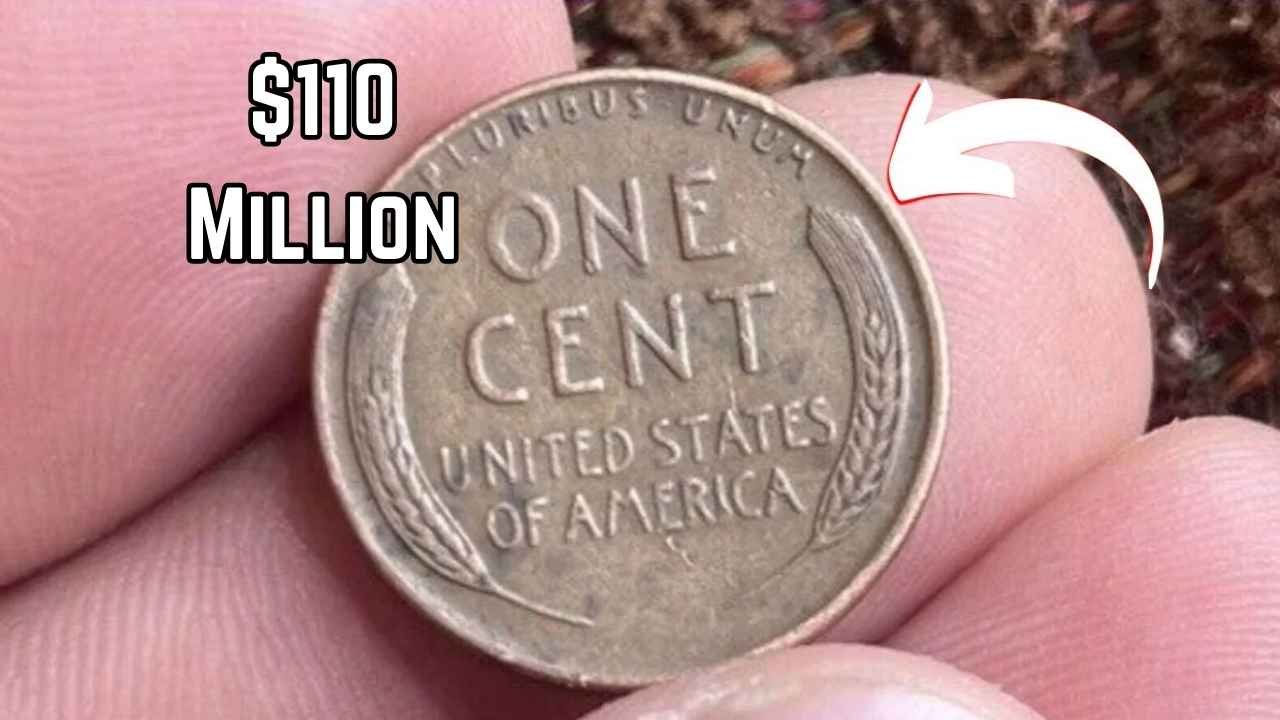A Penny Worth a Fortune?
The claim of a Lincoln Wheat Penny valued at $110 million, possibly still in circulation, has collectors buzzing with excitement. However, this figure lacks any verified backing from auctions or numismatic records. The most valuable Lincoln Wheat Penny, a 1943-D Bronze Cent, sold for $1.7 million in 2010, with top estimates reaching $2.3 million in mint condition, per official grading services. This article debunks the $110 million myth, highlights truly valuable Wheat Pennies, and offers tips for spotting rare coins in 2025.
The Lincoln Wheat Penny’s Story
Introduced in 1909 to honor Abraham Lincoln’s centennial, the Lincoln Wheat Penny, designed by Victor David Brenner, was the first U.S. coin to feature a president’s portrait. Minted until 1958, it displays Lincoln’s profile on the obverse and wheat stalks on the reverse, symbolizing prosperity. Made of 95% copper and 5% tin/zinc, billions were struck. In 1943, WWII copper shortages led to zinc-coated steel pennies, but rare copper errors from that year are the key to high value, per usmint.gov.
Unraveling the $110 Million Claim
No evidence supports a $110 million Wheat Penny. The highest sale remains the 1943-D Bronze Cent at $1.7 million, with uncirculated examples valued up to $2.3 million. The $110 million figure likely stems from:
- Misreported auctions confusing Wheat Pennies with coins like the 1794 Flowing Hair Dollar ($10M).
- Exaggerated hype around rare errors like the 1943 Bronze Cent.
- Speculative claims fueling excitement without auction data.
A pristine 1943 Bronze Cent could fetch millions, but $110 million is pure speculation.
Valuable Wheat Pennies to Seek
These Wheat Pennies, some still in circulation, command significant value:
- 1943 Bronze Cent: ~20 known; copper error, not steel. Value: $200K–$1.7M (MS-63).
- 1944 Steel Cent: ~10–15 exist; steel error, not copper. Value: $75K–$300K (MS-65).
- 1909-S VDB: 484,000 minted; “S” mint mark, designer’s initials. Value: $10K–$168K (MS-65 red).
- 1955 Doubled Die Obverse: Doubling on text. Value: $1K–$50K (MS-65).
- 1922 No-D: Missing “D” mint mark. Value: $500–$20K (VF-20).
| Coin | Key Feature | Value Range | Rarity |
|---|---|---|---|
| 1943 Bronze Cent | Copper, not steel | $200K–$1.7M | Extremely Rare |
| 1944 Steel Cent | Steel, not copper | $75K–$300K | Very Rare |
| 1909-S VDB | “S” mint, VDB initials | $10K–$168K | Rare |
| 1955 Doubled Die | Doubling on obverse text | $1K–$50K | Moderately Rare |
Spotting a Rare Penny
To find a valuable Wheat Penny:
- Check Date and Mint Mark: Look for 1909-S, 1914-D, 1922 (no “D”), 1943, or 1955. Mint marks (“D” for Denver, “S” for San Francisco, none for Philadelphia) are below the date.
- Magnet Test: 1943 copper pennies (3.11g, reddish) don’t stick to magnets; steel pennies (2.7g, silver) do. 1944 steel pennies are magnetic, unlike copper.
- Examine Errors: Use a magnifying glass for doubling, missing mint marks, or off-center strikes.
- Preserve Condition: Never clean coins; it reduces value.
- Verify Authenticity: Counterfeits are common, especially 1943 copper. Grade through official services.
Search coin rolls, old jars, or family collections for these rarities.
The Real Deal
The $110 million Lincoln Wheat Penny is a myth, with no sale exceeding $1.7 million. A 1943 Bronze Cent in top condition might reach $2.3 million, but billion-dollar claims are baseless. Coins like the 1909-S VDB or 1955 Doubled Die, worth thousands, are more likely finds. With the U.S. 250th anniversary approaching in 2026, per usmint.gov, Wheat Penny interest is soaring. Check your change, authenticate finds with reputable graders, and join the hunt for real treasures in 2025!



